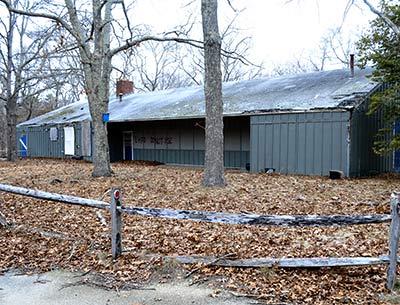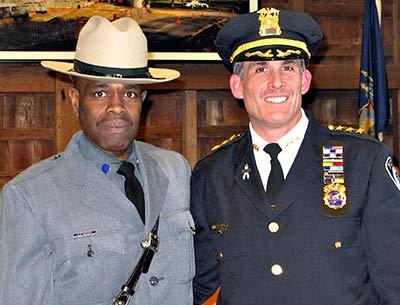Village May Take on Too-Big Houses
Village May Take on Too-Big Houses

Describing the results of a survey of 173 properties as “a wakeup call,” East Hampton Village’s director of historic services advised the village board on Friday that the character of the village would be irrevocably harmed unless new formulas for construction on lots of 40,000 square feet or more were adopted.
Robert Hefner, representing the planning and zoning committee chaired by Elbert Edwards, a member of the village board, and comprising the chairmen of the planning, zoning, and design review boards and the village’s administrator, attorney, chief building inspector, and planning consultant, detailed the formula changes the committee has therefore recommended.
He noted that the village’s 2002 comprehensive plan states that “new development and redevelopment should be compatible in terms of size and scale with each existing residential neighborhood and should reinforce their integrity as they have developed over 350 years.”
The village’s “existing regulations were created with smaller lots in mind” and structure size and lot coverage “were extended across the board without studying their impacts on neighborhoods with larger lots,” he said.
At the conclusion of his presentation the board unanimously agreed that a public hearing on the recommended changes should take place at its May 15 meeting.
Properties in eight neighborhoods distinguished by lots larger than 40,000 square feet, or one acre, were surveyed. Hither Lane, Further Lane, Lily Pond Lane, Lee Avenue, Ocean Avenue, and Georgica Road to Apaquogue Road, as well as those bordering Hook Pond and within the Main Street historic district, he said, are in neighborhoods with history and established character and are “desirable locations that have seen considerable development” since the comprehensive plan’s adoption.
Citing the potential for a 62-percent increase in gross floor area of structures in the surveyed neighborhoods, Mr. Hefner said committee members were “surprised that, even with all the recent development in these neighborhoods, there was still this kind of potential for increase of mass.” The finding that, under the present formula, the aggregate mass on 21 properties on Hook Pond could double was the “clear realization that our present formulas will not protect the character of the village.”
Graduated formulas are in place in the villages of Sagaponack and North Haven, Mr. Hefner said. While the formula for gross floor area used by Sagaponack is the same as that in East Hampton for lots up to 40,000 square feet, it is reduced for lots from 40,000 to 80,000 square feet, and reduced further for still larger lots. Mr. Hefner recommended the same approach in East Hampton.
The present formula for principal structures — 10 percent of lot area plus 1,000 square feet — would remain in place for lots of 40,000 square feet or less, under the committee’s recommendations. On lots of 40,000 to 80,000 square feet, a principal structure could be no larger than 7 percent of the lot area plus 2,200 square feet. For lots greater than 80,000 square feet, the proposed formula is 3 percent of its area plus 5,400 square feet.
The present maximum size of accessory buildings, 2 percent of the lot area plus 200 square feet, “was developed to allow a garage and pool house on lots of 20,000 to 40,000 square feet,” Mr. Hefner said. When applied to larger lots, however, it yields an “unrealistically large” allowable mass. The committee recommended a formula of 1 percent of lot area plus 600 square feet for lots of 40,000 to 80,000 square feet, and one-half percent of lot area plus 1,000 square feet for those larger than 80,000 square feet.
“These formulas would allow the mass of accessory buildings to double,” he said, “while the existing formula would allow the mass to triple.”
As for maximum coverage, the committee recommended a graduated formula for lots greater than 40,000 square feet. For lots between 40,000 and 80,000 square feet, coverage permitted would be 15 percent of lot area plus 2,500 square feet, while 10 percent of area plus 6,500 square feet would be allowed for still larger lots. The formula for smaller lots, 20 percent of lot area plus 500 square feet, would remain in place.
Mr. Hefner said the new formulas would provide for “a degree of increase in mass that can fit well into, and be compatible in terms of size and scale with, existing residential neighborhoods having large lots.”






